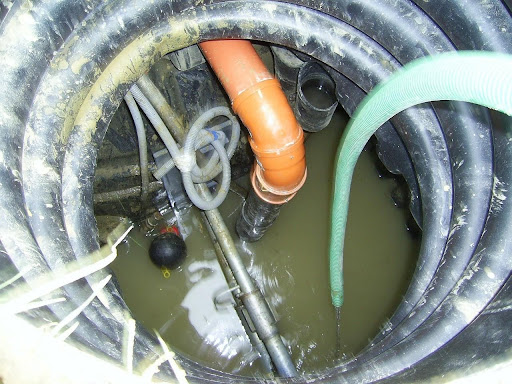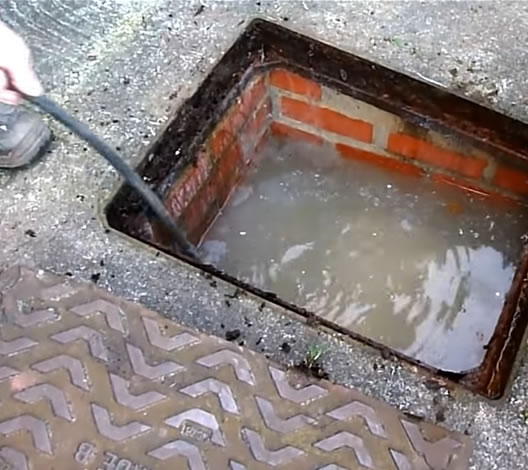Approaches for Tackling a Blocked Drain Before Contacting Professional Plumbers
Approaches for Tackling a Blocked Drain Before Contacting Professional Plumbers
Blog Article
Everyone has got their own unique thinking with regards to How to handle a clogged drain in your home.

Intro
Managing an obstructed drain can be an irritating experience, interfering with everyday activities and potentially creating damages to your building. Nevertheless, prior to reaching out to plumbing specialists, there are actions you can require to attend to the problem yourself. In this guide, we'll discover do it yourself remedies and safety nets to deal with an obstructed drainpipe efficiently.
Determining the Issue
The very first step in attending to an obstructed drainpipe is recognizing the indications. Sluggish water drainage, gurgling audios, foul odors rising from drains pipes, or water support up prevail indicators of an obstructed drain. Recognizing these signs early can help stop better issues.
Choosing the Right Pipes Service
When picking a pipes service, think about elements such as experience, licensing, and customer reviews. Pick a reputable plumbing professional with a track record of quality craftsmanship and transparent prices techniques.
Price Considerations
The price of specialist drainpipe cleaning company can differ depending upon the seriousness of the blockage and the plumber's prices. Demand quotes from several carriers and inquire about any service charges to ensure transparency and prevent surprises.
Safety and security Precautions
When attempting DIY drain cleaning, focus on safety and security. Put on protective handwear covers and glasses to avoid contact with hazardous chemicals or bacteria. Never ever blend different drainpipe cleaning products, as this can generate unsafe fumes.
Situation Studies
Real-life examples illustrate the effectiveness of DIY remedies and the relevance of prompt specialist intervention in resolving drainpipe obstructions.
Common Sources Of Blocked Drains
Comprehending the aspects that contribute to drain pipes obstructions is vital for reliable resolution. Common perpetrators include hair, soap residue, grease, food debris, and foreign items like hygienic products or paper towels. Tree roots attacking below ground pipelines can also trigger considerable blockages.
Do it yourself Solutions
For small clogs, a number of DIY options can be efficient. Putting boiling water down the drain can aid dissolve grease and particles. Baking soda and vinegar or a mix of salt and baking soda can serve as natural cleaners. Utilizing a bettor or pipes serpent to remove blockages is one more option.
Tools and Devices
Having the right tools on hand can make do it yourself drain cleansing a lot more reliable. A plunger is a flexible device for removing clogs in sinks, bathrooms, and showers. A plumbing serpent or auger can get to deeper clogs, while drainpipe cleansing chemicals can be used carefully for stubborn obstructions.
Safety nets
To prevent future obstructions, adopting safety nets is essential. Mount drainpipe guards or strainers to catch hair and debris prior to they go into the pipelines. Consistently flush drains with hot water to liquify grease build-up, and stay clear of throwing away grease or strong waste away.
When to Call a Specialist
While DIY services can fix small obstructions, particular indications indicate the need for expert assistance. Relentless obstructions, foul odors despite cleaning efforts, or multiple drains supporting concurrently are warnings that call for expert treatment.
Verdict
By complying with the suggestions detailed in this guide, you can efficiently deal with obstructed drains pipes and stop future plumbing problems. Whether going with DIY remedies or seeking professional aid, timely activity is crucial to keeping a healthy and balanced pipes system and preserving the stability of your home.
How to Clear a Clogged Drain Yourself (And When to Call In the Professionals)
What Can Clog a Drain
Dirt Skin flakes Hair Grease Soap scum Food Offset pipes Tree roots Small objects Mineral buildup DIY Tricks to Unclog a Drain
You can fix this! Once you have identified the source of the clog (or have a vague idea), you can try one or a combination of these fixes in order to clear your plumbing.
Wire Hanger or Snake
Untangle and clear out hair from a drainpipe with a homemade snake. Use a straightened-out wire hanger with a 90-degree angle hook to locate the clog and drag out any unwanted material.
Remember not to push the clog further down to where the wire hanger cannot reach! If you need to follow up with a plunger, give it a try. Your efforts might be more successful after it’s been wire-snaked.
If you want to get fancy and don’t have a wire hanger to spare, head to the store and pick up a hand-operated drain snake. You can get one for $10-$30. It may save you the hassle, and provide additional length to reach deep into the clogged pipe.
Plunger
A cup plunger has a suction cup attached to a wooden handle. The rubber creates a seal around the drain, and increases the pressure force of the plunger.
Plunge for 30-second increments to loosen the clog. This may need to be repeated over the course of 15-20 minutes. Once plunged, run the water to flush the remaining material out of the drain.
Remember– never use a plunger if you have used a chemical drain cleaner. These chemicals can splash up from the force of the plunger and cause serious injury or burns.
Boiling Water
Hot water can sometimes break up materials into a flushable amount. Dirt, grease, and soap buildup requires heat in order to unstick from surfaces.
Take your kitchen kettle and heat your water to a boil. Once it reaches a rolling boil, pour it directly down the drain into the blockage. Carefully follow with plunging, if necessary.
Don’t worry if this takes more than one try! It can often take multiple kettles and repeated plunging in order to clear a particularly stubborn clog.
Chemical Drain Cleaner
As a last resort, pick up a bottle of chemical drain cleaner. Drain-cleaning chemicals are potent, and not very good for the environment.
You may need to wear protective eyewear in gloves before handling your bottle of chemical drain cleaner. Follow the instructions printed on the bottle, and flush with water as soon as the instructions allow. Do not follow with plunging.
Baking Soda and Vinegar
As a safer alternative to chemical drain cleaner, baking soda and vinegar can create a chemical reaction that clears tough clogs.
Combine one cup of cleaning vinegar with one cup of boiling water, and set aside. Once you have done this, pour half a cup of baking soda down the drain. Give the baking thirty seconds to settle and cover a large portion of the problem drain.
Following the baking soda, pour down your vinegar and hot water solution. Once the vinegar and baking soda combine, the mixture will bubble and fix. Let this reaction fizzle in the drain for about an hour.
After an hour, follow with a kettle’s worth of hot water. The heat and liquid should flush out any remaining material.
When to Call a Plumber
If your DIY attempts haven’t cleared your clog drain, it’s time to call in a professional. It’s not worth losing access to your kitchen sink or high-traffic bathroom. A clog in a vital area can keep you from the things you’d rather be doing, and derail your routine.
Anytime a clog is causing water to spread is a time to call in a plumbing service. What starts out as a little bit of water can quickly grow into serious, expensive water damage.
Additionally, a serious clog can result in burst pipes or serious leaks. Make sure you know when to take it seriously!
https://myguysnow.com/how-to-clear-a-clogged-drain-yourself-and-when-to-call-in-the-professionals/

I'm very intrigued by How to handle a clogged drain in your home and I am hoping you enjoyed reading our piece. Loved our write-up? Please share it. Help someone else find it. We take joy in your readership.
Try Here Report this page